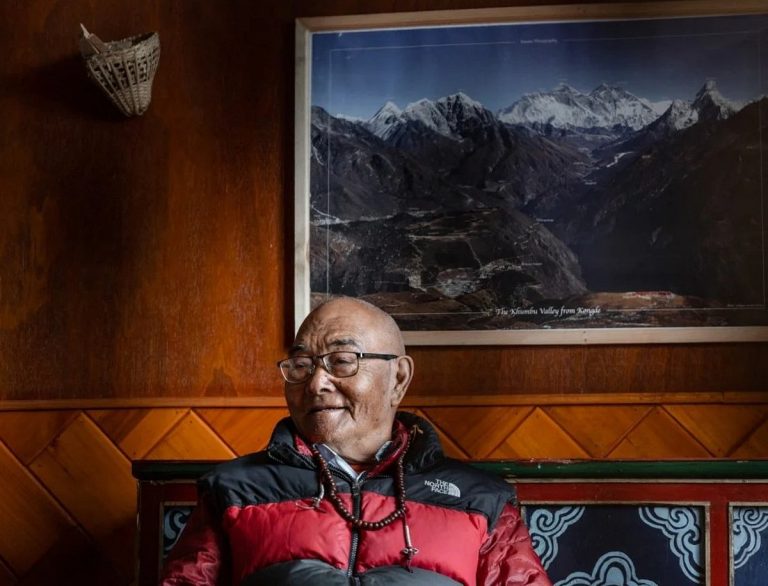Severe Storms and Avalanche Claim Lives in Nepal
Recent severe snowstorms and an avalanche in Nepal’s Himalayan region have resulted in the deaths of nine individuals, including five climbers from Italy. The incidents occurred over the weekend, highlighting the dangers of high-altitude expeditions during adverse weather conditions.
Avalanche at Yalung Ri Peak
On Monday, a devastating avalanche struck a group of 12 climbers at the base camp of Yalung Ri peak, which stands at 5,630 meters (18,471 feet) in central Nepal, near the Chinese border. This tragic event claimed the lives of seven climbers: three Italians, two Nepalis, a German, and a French climber. Phurba Tenjing Sherpa, a representative from the expedition company Dreamers Destination, confirmed the fatalities, stating he had seen all seven bodies.
Rescue efforts were promptly initiated, and the surviving members of the group were airlifted to Kathmandu on Tuesday morning. Among those rescued were two French climbers and two Nepalis, who are currently receiving medical treatment in a local hospital.
Survivor Accounts
Survivors of the avalanche shared harrowing accounts of the incident. French climber Didier Armand Berton, 61, described how “slabs” of ice crashed down on them, burying some climbers under the snow. He recounted the moment of the avalanche, stating, “Suddenly we heard a loud noise, and the slabs came crashing down.” Berton and others managed to escape by jumping over a rock face, while they also worked to free a trapped guide using an ice axe.
Tragically, Christian Manfredi, 69, lost his life after being struck on the head by a falling rock. His wife, Isabelle Thaon, who was also caught in the avalanche, expressed her grief, noting that while she survived with minimal snow on her, her husband was not as fortunate.
Earlier Incident in Western Nepal
In a separate incident in western Nepal, two Italian climbers, Alessandro Caputo and Stefano Farronato, lost their lives while attempting to summit Panbari mountain, which rises to 6,887 meters (22,595 feet). They had been out of contact since Friday, and local authorities confirmed their deaths due to heavy snowfall at Camp 1, located at 5,000 meters above sea level.
Climbing Season in Nepal
Nepal is renowned for its towering peaks, including eight of the world’s ten highest mountains, attracting numerous climbers and trekkers each year. The autumn season is particularly popular for expeditions, despite the challenges posed by shorter days and unpredictable weather. Recently, Cyclone Montha has brought heavy rain and snowfall, leaving many trekkers stranded on popular routes.
According to the Himalayan Database, since 1950, over 1,093 climbers have died in the region, with avalanches accounting for nearly one-third of these fatalities.
FAQs
What caused the recent fatalities in Nepal?
The fatalities were primarily caused by severe snowstorms and an avalanche that struck climbers in the Himalayas, resulting in multiple deaths over the weekend.
How many climbers were involved in the avalanche at Yalung Ri peak?
Twelve climbers were involved in the avalanche at Yalung Ri peak, with seven confirmed dead, including three Italians.
What are the risks associated with climbing in Nepal during the autumn season?
Climbing in Nepal during the autumn season poses risks due to shorter daylight hours, colder temperatures, and the potential for heavy snowfall, which can lead to dangerous conditions such as avalanches.
Conclusion
The recent storms and avalanche in Nepal serve as a stark reminder of the inherent risks associated with high-altitude climbing. As rescue efforts continue and survivors recover, it is crucial for climbers to remain vigilant and prepared for the unpredictable nature of the Himalayan environment.
The recent tragedies underscore the importance of safety measures and preparedness for climbers in high-altitude environments. Many expedition companies emphasize the need for thorough training and awareness of weather patterns, as conditions can change rapidly in the mountains. Additionally, climbers are often advised to monitor forecasts closely and to have contingency plans in place in case of emergencies.
Nepal’s climbing industry plays a significant role in the country’s economy, drawing thousands of adventure seekers each year. However, the risks associated with high-altitude climbing are compounded by the region’s challenging terrain and weather conditions. As authorities investigate the recent incidents, discussions around enhancing safety protocols and improving communication systems for climbers are likely to gain traction in the coming months.
Also Read:
UAE Weather: Cooler Temperatures and Rain This Week







